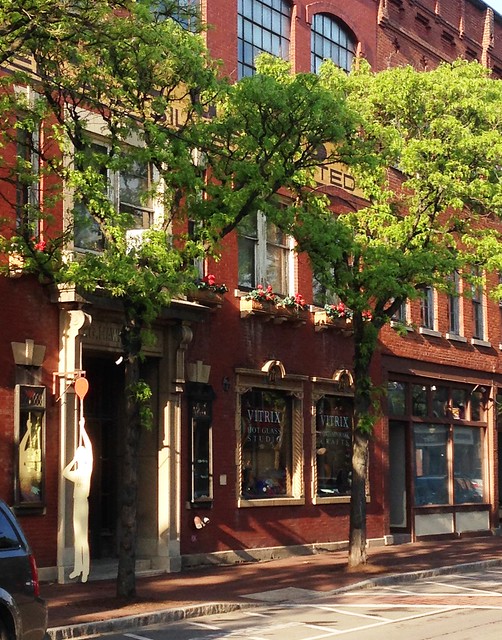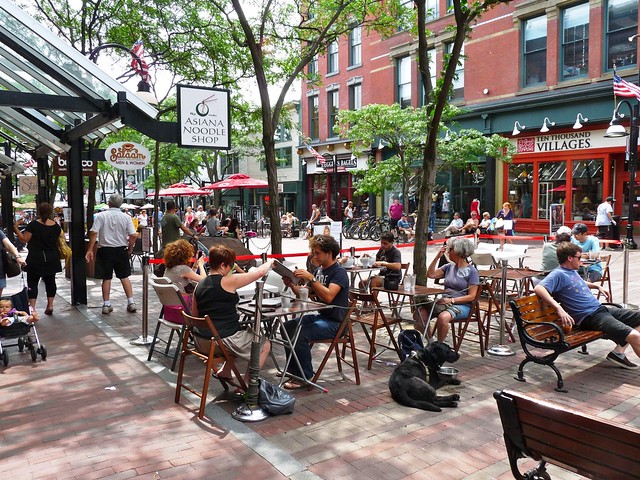What we like - and don't like - about our cities

Posted July 29, 2014 at 1:35PM
American city dwellers place a high value on their cities’ food offerings, from restaurants to farmers’ markets. We also love historic buildings and good public spaces. Traffic, not so much. These findings are from a new study released last week by Sasaki Associates, a Massachusetts-based design and planning firm.
The study, although limited to six cities, is rich with interesting findings that should help inform the agendas of urban planners and advocates. The findings should also matter to environmentalists, because successful cities are key to a sustainable future. To get the environment right, we need to create and maintain urban environments that people love.
Restaurants and food
In particular, restaurants and other sources of food are among the most popular aspects of city life, according to respondents in six major US cities:
“When we asked city residents what aspects of urban life enchanted them, food kept popping up in their responses. Eighty-two percent of urbanites appreciate their city's culinary offerings.”
Restaurants were also ranked number one among a menu of items that would make residents visit a new part of their city, named by 46 percent of respondents, and number one among a different list of choices when asked to name “the most outstanding aspect of cities people love to visit.” (“Local attractions” ranked second.)
One thousand respondents participated in the survey from Austin, Boston, Chicago, New York, San Francisco, and Washington, DC. The study was conducted in May 2014.
Architecture and public spaces

City dwellers also place a high value on historic architecture. 54 percent agreed that, “to improve their city’s architectural character,” they “would like to see their city invest in renovating existing historical buildings to retain character while making them more useable.” Only 17 percent felt their city was too quaint and “would like to see more skyscrapers and iconic buildings.”
Similarly, 57 percent will “stop to admire buildings that are historic,” while 19 percent favor “buildings that are modern.” 38 percent admire buildings “that prominently feature public art or very unique design elements.”
Beyond buildings per se, urbanites love parks and other good public spaces. The study’s authors found that most people remember their favorite city experience taking place outdoors, either in a park or on a street. A park or street was named by 65 percent of respondents as the site of a favorite experience, with private buildings coming in a distant second at 22 percent. Government and civic buildings came in at a paltry 6 percent.
Waterfronts were named most popular among public spaces, with large parks coming in second. And substantial numbers of respondents wish their cities would make streets more friendly to cyclists and pedestrians, would support adding outdoor music and entertainment venues, and would like more small urban parks, “such as for visiting on lunch breaks.”
Transportation and parking
Not all is rosy in cities, however, according to the survey. A substantial plurality of respondents – 41 percent – cited traffic as first among city complaints. Yet most respondents are themselves contributing to that traffic, with 58 percent saying that they use cars most frequently among modes of transportation. (Half that many listed public transit.)
Not that I blame them. For many people, even in cities, convenient, comfortable, and clean alternatives to driving either don’t exist or don’t function in a way that meets their needs.
The study’s authors write:
“When we asked urban residents what they liked least about living and working in a city, traffic was the unsurprising winner.
“Breaking Americans of their car habit has been an ongoing battle. Transit-oriented development is the most-
cited solution to encourage a less auto-centric society. (An anomaly, New York has the city-wide density to support a robust transit network.)
“However, the numbers (here and elsewhere) speak loud and clear: we are still auto-dependent. We need to plan and design differently—in a way that will enhance mobility options while still acknowledging our love for the automobile.”
The second-most-listed complaint was a lack of parking.
Staying put
Ultimately, the study provides great news, at least about the cities surveyed: 60 percent of respondents said they plan on living either where they do now or in a different part of the city. The portion who say they plan to move outside the city at some point, 34 percent, is also a large number. But what a welcome contrast to the situation a few decades ago when central cities were emptying out, suburbs seen as the overwhelmingly preferred domicile for those with a choice.
Not long ago, I listed some questions designed to elicit whether a city is environmentally and socially sustainable. Those questions remain important, regardless of the findings here. But we’ll have a much better chance of reaching sustainability if we provide its ingredients in a form that responds to people’s self-expressed needs, such as those reported here. As I have said before, if our solutions don’t work for people, they will never work for the planet.
Kaid Benfield writes about community, development, and the environment on Switchboard and in other national media. Kaid’s latest book is People Habitat: 25 Ways to Think About Greener, Healthier Cities. Today's article was first published on the Huffington Post.
Related posts:
- Moving beyond "smart growth" to a more holistic city agenda (July 8, 2014)
- Six ways that thoughtful community planning can help fight climate change (June 4, 2014)
- Pedestrian safety leads to more walking, or is it vice versa? (May 30, 2014)
- Older buildings, continuity of place, and the human experience (May 19, 2014)
- Boston's Emerald Necklace sets the standard for linked city parks (November 15, 2013)
